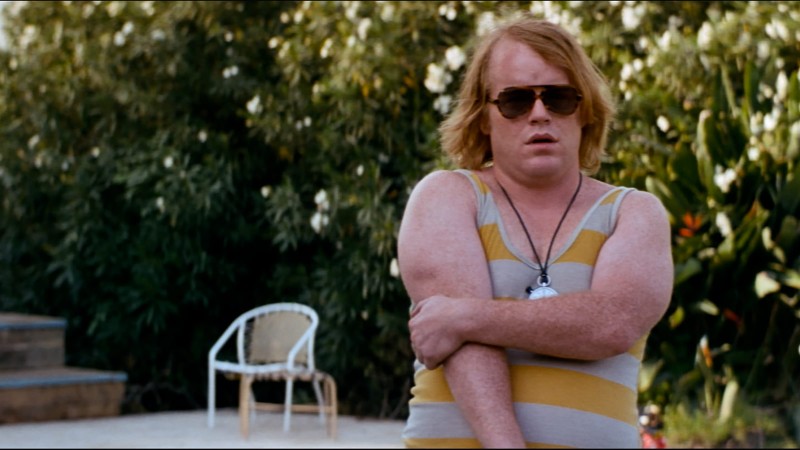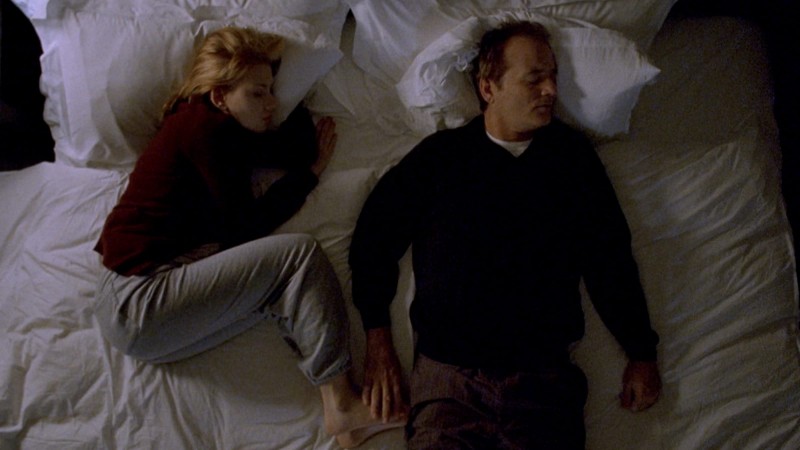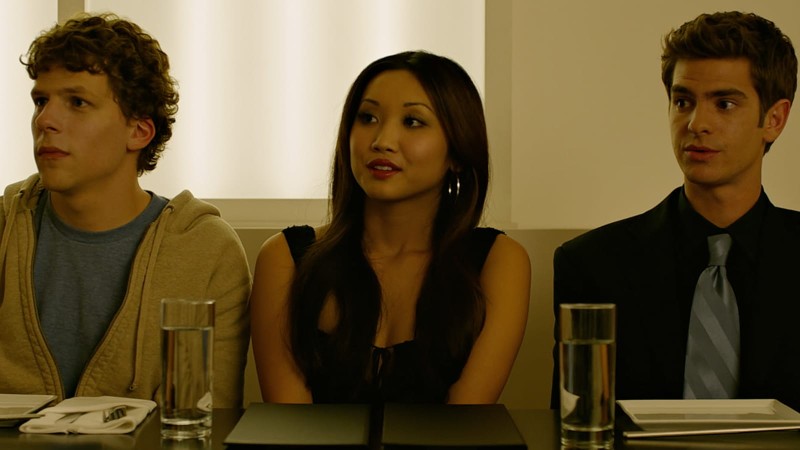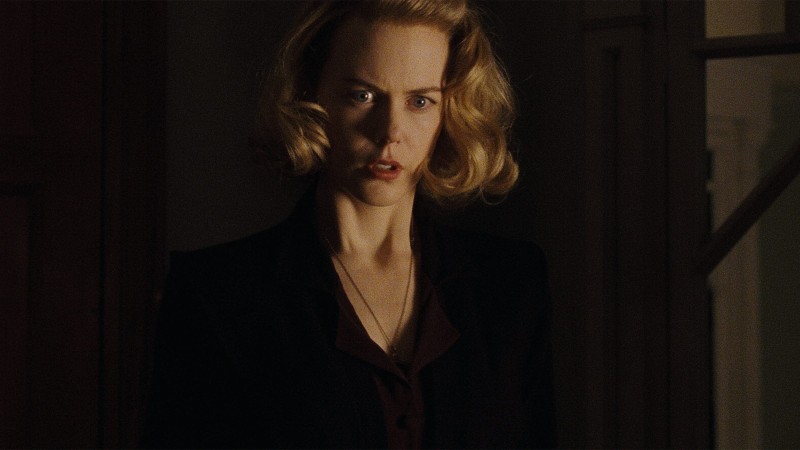Excavating Queer Histories with Sam Ashby
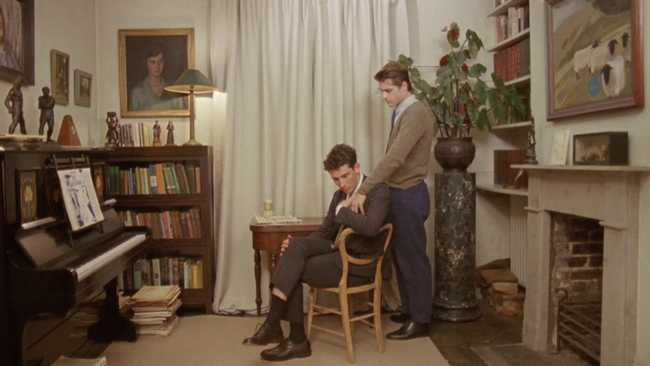
Sexual relations between men were illegal in the U.K. until 1967, when the Sexual Offences Act decriminalized them for partners over the age of twenty-one. In his 2017 short The Colour of His Hair, graphic artist and filmmaker Sam Ashby deftly weaves together elements of drama, archival material, documentary footage, and oral history to explore how this abhorrent discriminatory policy forced gay men to live their lives on the margins, afraid to embrace and reveal their true selves.
The dramatic aspect of the piece is based on a script Ashby found during his research process. With echoes of Basil Dearden’s 1961 Victim, the first English-language film to contain the word homosexual, the script (also titled The Colour of His Hair) follows Peter and John, two gay men in 1960s London who fall victim to blackmail. Written in 1964 by a young woman named Elizabeth Montagu—whose half-brother, aristocrat and socialite Lord Edward Montagu, was famously imprisoned for “homosexual offences”—it was intended as a political and educational tool for groups campaigning for gay rights. Eventually those progressive groups did engineer change, though this particular project was abandoned.
This week we’ve paired The Colour of His Hair with Victim for our latest Tuesday’s Short + Feature, now streaming on the Criterion Channel on FilmStruck. To delve deeper into this turbulent period in queer history, I spoke with Ashby about how he came to direct his evocative hybrid short and what he learned while making it.
Tell me a little bit about your artistic background and what kind of work you’ve made in the past.
I’m a graphic designer by trade and have specialized in making film posters for over fifteen years, working mostly on low-budget, independent, and art-house productions [Weekend, The Turin Horse]. In 2010 I published the first issue of Little Joe, my ongoing queer film journal, which maps the subterranean canon of queer cinema, past and present. Starting a few years ago, there was a gradual shift in my mind toward seeing design and publishing within a broader artistic practice and opening them up to experimenting with different forms. I guess I’ve always been working in and around film, but it’s only now that I’ve actually started working with the medium itself.
What inspired you to explore this history, and how did you first find out about the existence of Elizabeth Montagu’s script?
My work has been exploring queer histories for some time, mostly through Little Joe, so it felt like a natural progression for me to explore these narratives through film. I had hit a dead end with the research on an entirely different subject when I found Elizabeth Montagu’s unfilmed script for The Colour of His Hair at the Hall-Carpenter Archives in London. It was such a unique text, with such historical weight, that it felt absolutely necessary to do something with it. It came with a responsibility, too, to tell this story in a way that was respectful. I wanted to honor the original intent for the script—which was to be an educational tool to help change public perceptions of homosexuality—while bringing in my own experience of encountering the archive and the various questions that the research brought up.
How did you identify and select what you wanted to include of the archival footage elements in the film?
I worked with the BFI to access their enormous film archive. The institution had partially funded the film, so I had open access, which was incredible. They had also been busily digitizing and restoring films for a season of programming to mark the fiftieth anniversary of the partial decriminalization of homosexuality, so there was a considerable amount of material to look through. Ultimately I was interested in representations of gay men before and around the time of the change in the law. There was one documentary, This Week: Homosexuals (1964), that was quite bold for the time, in which “homosexuals” were interviewed about their experiences. Almost all of the subjects were anonymous, with their faces filmed in shadow or from behind. It was quite extraordinary to see. I found the Super 8 home movies that appear at the end of The Colour of His Hair at LAGNA [the Lesbian and Gay Newsmedia Archive], and the man who shot them was kind enough to let me use them. Most of those were little travelogues, but among them were these incredible moments of intimacy between men. It was important to show these as a kind of utopian future for the characters in the central drama.
Could you talk about how you approached weaving together all these different elements?
There was really no way I could feasibly adapt the full script with my budget, but I wanted to create something that took the viewer through the alternative timeframes that she had written so effectively. She didn’t confine the story to a linear narrative and shifted between different temporalities—in order to build upon the central drama taking place between Peter and John, she jumped around in time to show the characters’ childhoods and how they met. Rather than expanding the narrative and characters as she had written, I wanted to help the audience understand the story of the script within a broader context of queer life under the law, the activism that helped change the law, and the queer culture that developed after it. The archive was the place that the script came from, and so it was important to see what else I could find there to tell this story, so elements such as oral histories and archive film became integral. There is a feeling of traveling through time that I wanted to create in the editing, with each temporal plane conforming to its own logic.
In the parts where you stage the script, the style of acting actually feels like what you’d find in a British film of the fifties or sixties, such as Victim. There’s a stiff, repressed, very “proper” quality to it.
Oh yes, absolutely. I love that stiff-upper-lip quality of old British movies like Victim and Brief Encounter, and I wanted to really capture that time through the staging of the script. That quality also comes from the fact that we shot on 16 mm, and on a very limited amount of it, so I had to work with the actors for a long time—probably longer than they were happy with—so we would be able to shoot it in unbroken takes. It feels staged, but I like that about it. It’s not hiding the context behind the script but rather highlighting it. There’s something a little uncanny about it for me.

At one point one of your interviewees talks about how LAGNA is about the gay community taking possession or ownership in the midst of antagonistic press. Do you see this film and your work in general as a part of this process?
I think to a degree my work enacts this process of taking possession. It has become clear to me through my work on Little Joe and The Colour of His Hair that centuries of Western oppression have served to malign, distort, and destroy queer narratives. I often see my work as a kind of queer archaeology, bringing these submerged stories into public view, and hopefully enlivening them with a contemporary perspective.
There are many different voices threaded throughout the film, but you don’t identify them until the end. Can you talk about this choice?
I liked the idea that not revealing the sources until the end somehow allowed them to exist on the same plane, despite being from different times—one being an archival oral history recording, and another being an interview I conducted. The decision to not identify them also speaks to the anonymity of the queer lives that the film attempts to highlight.
The music is integral to the tone of the piece. Can you tell us about it and its composer?
I had initially asked my editor, Alexandros Pissourios, to edit the film to a section of Marc Wilkinson’s score for Lindsay Anderson’s If…. that accompanies the beautiful black-and-white scene of Richard Warrick’s character performing gymnastics on the bars. There is an amazing oscillating quality to it that appealed to me and gave my film a sense of opening up, of revealing. I had been looking for a composer whose work captured that quality, and Alexandros suggested Leslie Deere, whom he knew and had worked with before. Leslie generously sent us compositions from her incredible archive of field recordings and samples, and we started working out where they could fit within the film. I loved the hypnotic droning sound she creates. She composes in unusual ways, sometimes using her whole body as a performance, in which her movements are translated to sound through special cameras and software. What was incredible was the darkness that Leslie’s music added to an already quite dark story. There’s a sense of foreboding that underlines the early parts of the film, and ultimately she really captured that feeling of opening up that I wanted.
You have mentioned that Basil Dearden’s Victim has been an important film for you. Can you explain why? Is it the film itself or the place it holds in history, or both?
I’m a huge fan of Dearden. His films are deeply rooted in their time because of the specific social dramas they portray. Violent Playground is another one of his films that takes a kind of pulpy social-panic storyline and weaves an intricate narrative around it that forces the audience to confront what were then difficult subjects. We have moved far beyond those times politically, but in Victim we are left with a brilliant thriller, a British noir up there with the greats. It still has something to say today because it was daring.
What other films or artists have inspired you?
I’m a huge fan of Stuart Marshall, who was making some really smart and fun videos in the seventies and eighties that dealt with queer history, politics, and the media’s misrepresentation of AIDS. I also love the films of John Greyson and the early TV documentaries of Ken Russell, which are so bold and inventive in their approach to factual stories and have inspired me to push beyond traditional modes of storytelling. For developing the look and feel of the narrative sections of The Colour of His Hair, I looked at Hitchcock’s Rope and Vincente Minnelli’s Tea and Sympathy, both of which create so much drama within narrow confines.
How has the film been received, and what are you working on now?
I’ve been blown away by the response that the film has had in the last year. It’s traveled to so many film festivals around the world, and I’ve had the pleasure of following it to a few of them too. It won the best documentary prize at London Short Film Festival in January, and now it’s been picked up for distribution internationally, so I am very happy indeed.
I’ve just started writing my first feature. It’s another queer-historical story, involving lots of archival research. I’m going further back in time than I have before, and it’s a very unusual story, so it’s proving fun and challenging.

